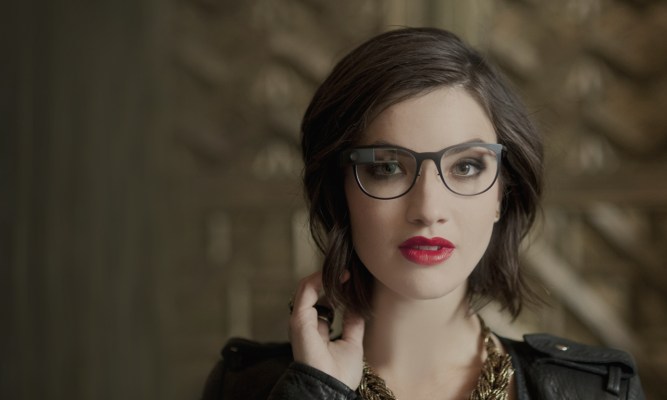Google has taken the step that many asked for regarding its Google Glass head-mounted computer – it introduced prescription frames for the device, via an update to the Google Glass website. Google has created four different varieties of frames that should fit the fashion tastes of a number of different shoppers, and a pair will add $225 to the existing $1,500 cost of Glass for Explorer program participants.
Explorers who already have Glass can just pick up a pair of the new glasses themselves, and then simply attach their existing device to them. The frames come in a Split version with a thinner lower frame and a sudden change in thickness, a Thin version that tapers at the bottom, a Bold model that are essentially squared thick-frame glasses, and the Curve which is similar but rounded.
They can work with either transparent or shaded lenses (additional $150 for the tinted shades, which also comes in three styles) and Google currently offers custom fitting by optometrists at locations in SF, LA and NYC, with plans to seed the program in more cities worldwide. There are only 200 doctors currently versed in the fitting system, but Google tells CNET it hopes to increase that number to 6,000 by year’s end. Google is working with eye care insurer VSP VisionCare to get the training done, and the insurance partnership should help with adoption, too.
Just introducing a prescription option should widen the appeal of Glass considerably, but a big goal of the program is to set an example for existing eyeware makers, Google told CNET. Much like its Nexus program, the company is viewing this effort as a means of setting a baseline for what prescription Glass can be.
[gallery ids="948048,948049,948050,948051,948052,948053,948054,948055,948056,948057"]
The new Glass glasses can hold lenses with up to either a +4 or -4 corrective factor, and they can also be bought with clear lenses with no corrective element at all, if you’re strictly in it for the fashion. These are admittedly good-looking lenses, but the point isn’t the fashion – it’s the fact that Glass is being built-in to something used by a huge percentage of the population every day already. There’s no behavior conditioning required to get people to use Glass once it’s attached to glasses, since it’s already on your face to begin with. It still looks a little awkward thanks to the bulky computing/screen module, but this is a step in the right direction towards mass market appeal.
Google is targeting late 2014 for a Glass consumer launch, and this was a key piece of the puzzle toward them getting there, so hopefully we’ll see them arrive before next holiday season.
